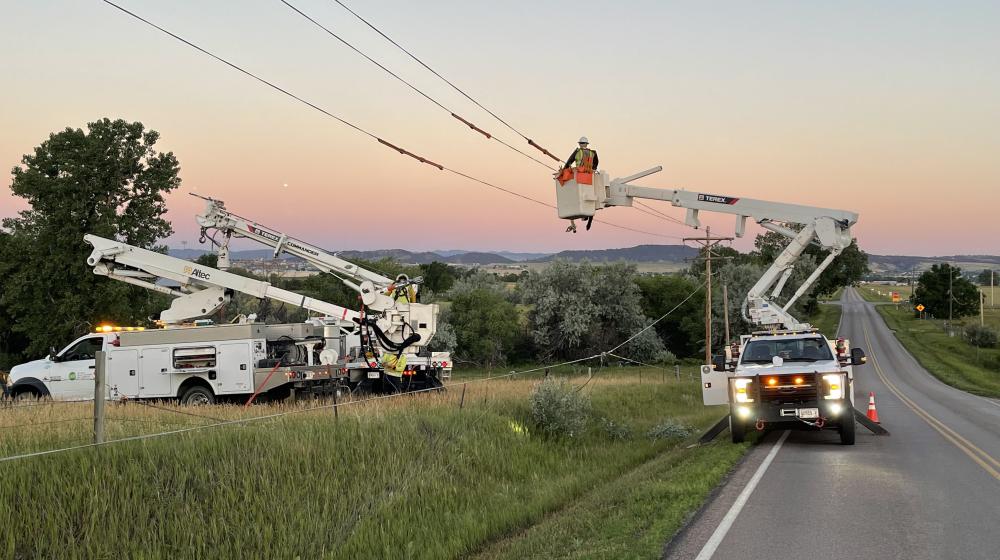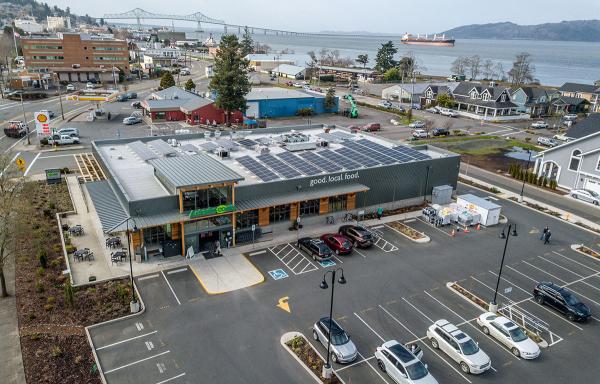
West River Electric Association, based in Wall, S.D. has been delivering power to the counties of Haakon, Jackson, Meade, Pennington, Oglala Lakota, and Ziebach in South Dakota since 1939. Their focus has always been on their customers, who are also their members, and recent upgrades have made that even easier, thanks to ‘Smart Grid’ technologies added to the electric grid.
“We can do so much more remote monitoring than ever before,” said Dick Johnson, West River Electric Associations CEO. “We get a better idea of where the issue might be and can deliver faster, more reliable member service because of that technology.”
Smart Grid technology offers faster, more reliable customer service
In the past, member calls required a technician to travel out to the home or business. Now with smart grid monitoring, they can identify if the issue is at the home or somewhere along the line.
“There have been times when it was simply a circuit breaker in the home that needed to be reset. The remote monitoring equipment meant the member was back online faster and the technician wasn’t taking the time searching for issues with the service coming into the home,” said Dick.
As cooperatives look at upgrades and new technologies to add into their service, they often turn to General Field Representatives, or GFRs, like Tom Jones from USDA Rural Development’s Rural Utility Service (RUS).
General Field Representatives provide priceless service
“The GFRs are the eyes and ears for us, they’re a vital part of how we do things,” said Dick. “South Dakota is very sparsely populated, so the GFRs and RUS help us keep costs down. They know the cooperatives. They know the people, and they understand the challenges of rural areas.”
Tom has been with the RUS program for seven years. He said the electric cooperatives offer better member service at a lower rate than if they were a stand-alone electricity provider.
“They’re able to provide power to everyone at the lowest cost possible,” said Tom. “We have many cooperatives across the state, and many of them work with RUS for loans to improve their electric system.”
Dick thanks RUS for offering loan terms that are attractive to rural electric cooperatives. “Costs have continued to climb, but because we’re able to get lower interest rates through RUS, our reliability, quality, and lower costs are all benefits the customer sees every day,” said Dick.
“When a cooperative borrows $4 million for a 30-year term, that 1% lower rate can mean a savings of more than $1 million dollars over those 30 years,” said Tom.
West River Electric Association received a $46.5 million loan in 2022 to connect 4,300 members, build and improve electrical lines, and add $1.5 million in new smart grid technology.
Security at top of mind for rural cooperatives
As our world continues to evolve, the staff at West River Electric remains vigilant. “We have staff working on security on a daily basis. We continue to add more cameras, we’re looking at adding geofencing at our facilities, and continue to watch for cyber threats to ensure a reliable network is available for its more than 15,000 members,” said Dick. The cooperative also has gone through a 10-step process to secure their network and receives daily posts from Cyber Security and Infrastructure Security Agency, or CISA, which is a division of the U.S. Department of Homeland Security of things to watch for on their system.

